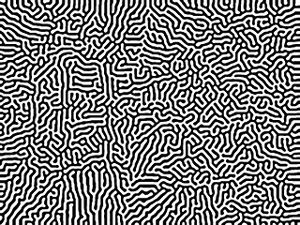Artificial facts for kids
When something is artificial, it means it was made by humans, not by nature. Think of it this way: a satellite that humans built and launched into space is artificial. But the Moon, which orbits Earth naturally, is a natural satellite.
Many artificial things are designed to copy or imitate things we find in nature. For example, an artificial flower might look just like a real one. Sometimes, artificial items use the same basic materials as natural objects. Other times, they are made from completely different materials. The idea of what is artificial and what is natural can sometimes be a bit tricky to define!
The word "artificial" comes from two old Latin words: art, which means "skill," and fex, which means "to make." So, "artificial" literally means "made with skill."
Artificial doesn't always mean synthetic. Something synthetic is created through a chemical process, often in a lab. For instance, an artificial sweetener is artificial because humans made it to taste sweet, and it's also synthetic because it's made from chemicals not found naturally. But a wooden chair is artificial (made by humans) but not synthetic, because wood is a natural material.
Contents
What Does Artificial Mean?
Artificial things are products of human skill and creativity. They are designed and built to serve a purpose, solve a problem, or simply make our lives easier or more interesting. From the clothes we wear to the buildings we live in, much of our world is filled with artificial creations.
Artificial vs. Natural: Key Differences
The main difference between artificial and natural is their origin.
- Natural things exist without human help. Examples include trees, rivers, animals, and rocks. They are part of the natural world.
- Artificial things are created or modified by people. This includes everything from a simple tool like a hammer to complex machines like computers or cars.
Why Do We Create Artificial Things?
Humans create artificial things for many reasons:
- To solve problems: We build bridges to cross rivers or develop medicines to fight illnesses.
- For convenience: Artificial lights let us see at night, and artificial fabrics can be more durable or easier to care for than natural ones.
- To improve life: Artificial limbs can help people who have lost a part of their body, and artificial intelligence can help us process information faster.
- For art and expression: Paintings, sculptures, and buildings are all artificial creations that express human ideas and feelings.
Everyday Artificial Things
You are surrounded by artificial things every day!
- Your clothes: Most clothes are made from artificial fabrics like polyester or nylon, or natural fibers like cotton that have been processed and sewn by humans.
- Your home: Houses and apartments are artificial structures, built from materials like concrete, wood, and glass.
- Technology: Your phone, computer, and television are all complex artificial devices.
- Food items: Many foods contain artificial flavors, colors, or preservatives to make them taste better, look more appealing, or last longer.
The Impact of Artificial Creations
Artificial things have a huge impact on our lives and the world.
- Positive impacts: They have led to incredible advancements in medicine, communication, transportation, and many other fields, making our lives safer, healthier, and more connected.
- Challenges: Sometimes, artificial products can create new problems, like pollution from plastics or the need to manage electronic waste. Scientists and engineers are always working to find ways to make artificial things more sustainable and environmentally friendly.
Related pages
- All pages beginning with Artificial
- Artifact (disambiguation)
- Ontology
See also
 In Spanish: Artificial para niños
In Spanish: Artificial para niños


